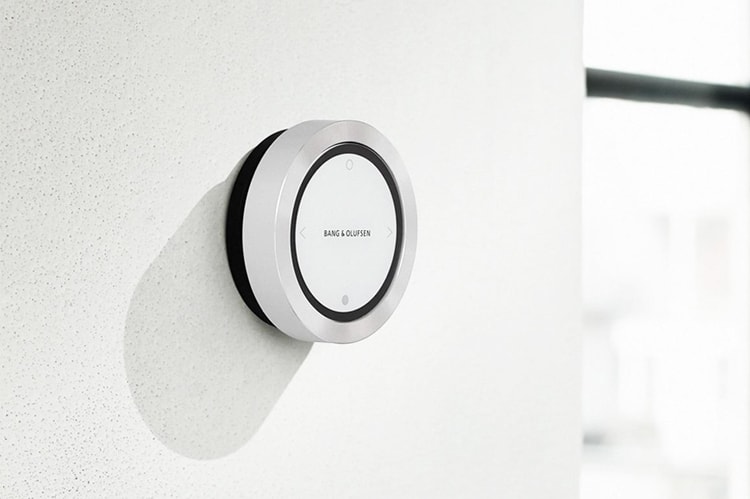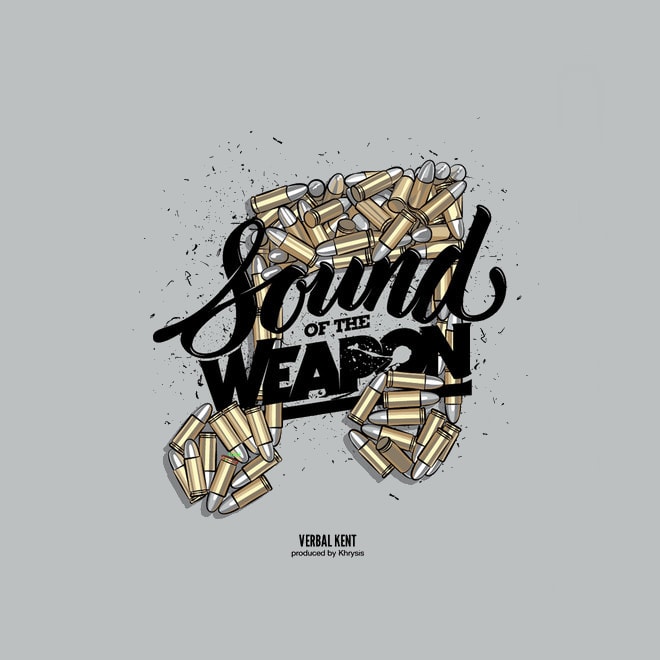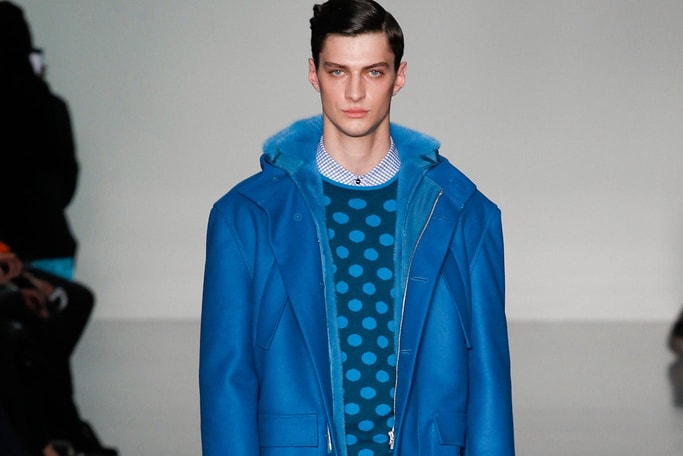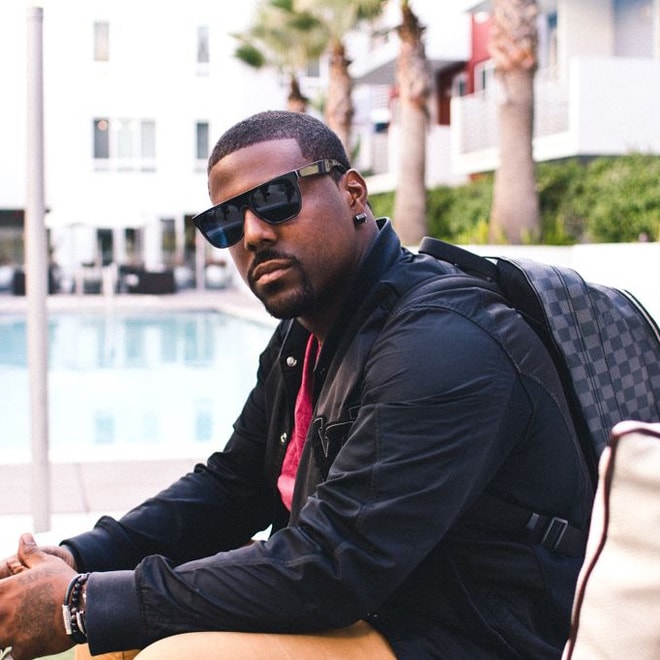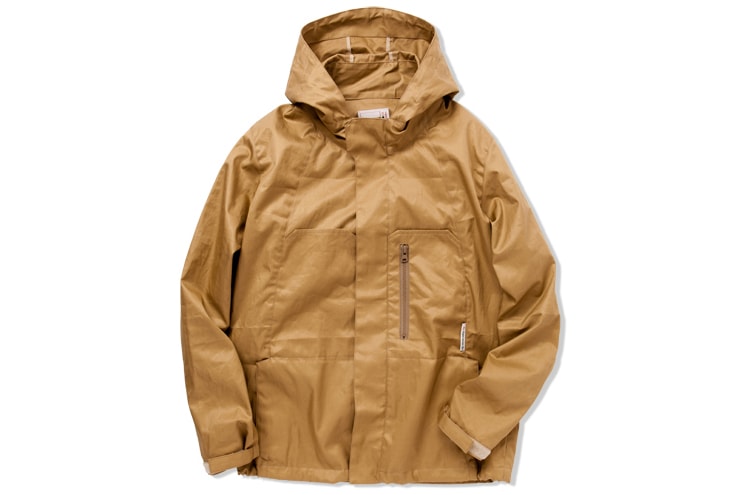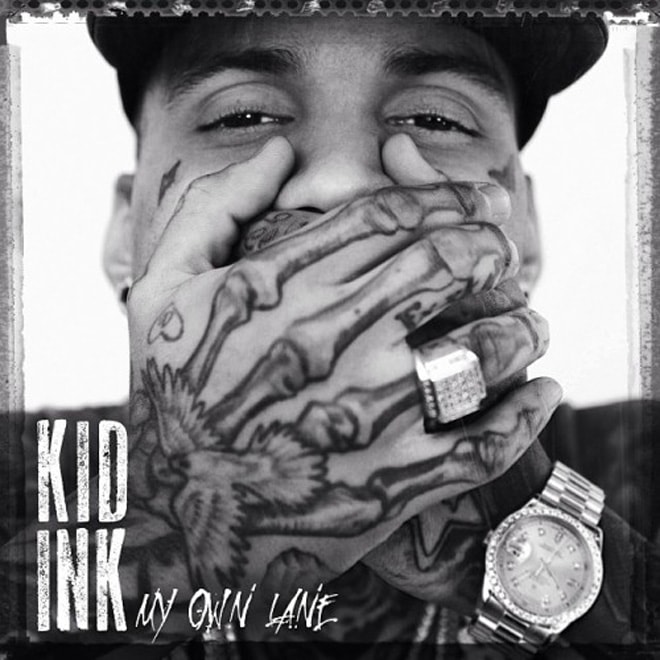A Conversation with Jens Olav Dankersen of Livid Jeans by Sven Eselgroth
Respected fashion and music photographer Sven Eselgroth explored the fashion scene in Scandinavia
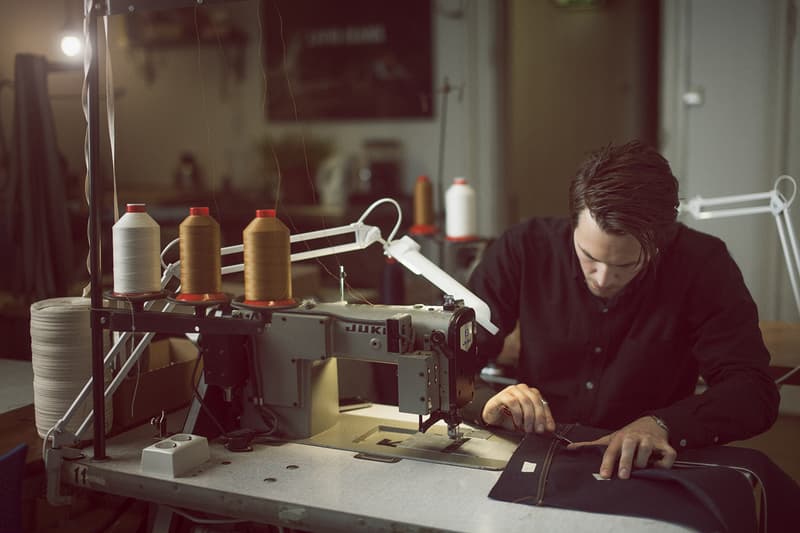
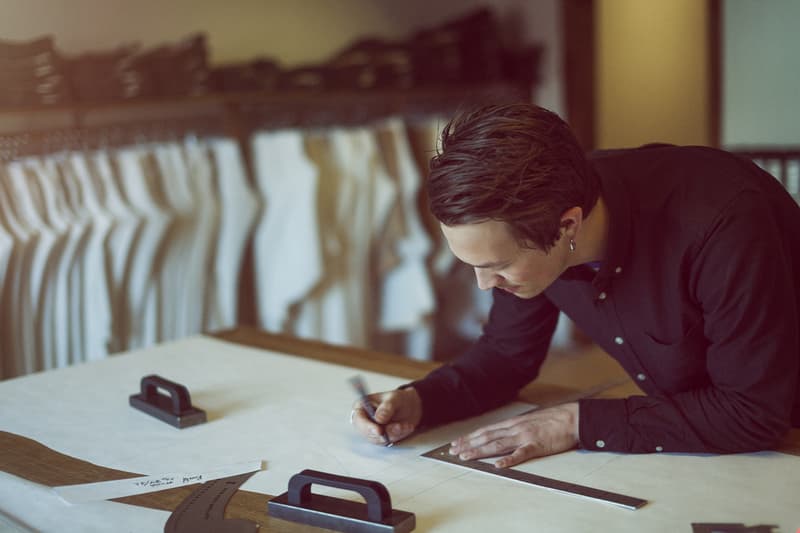
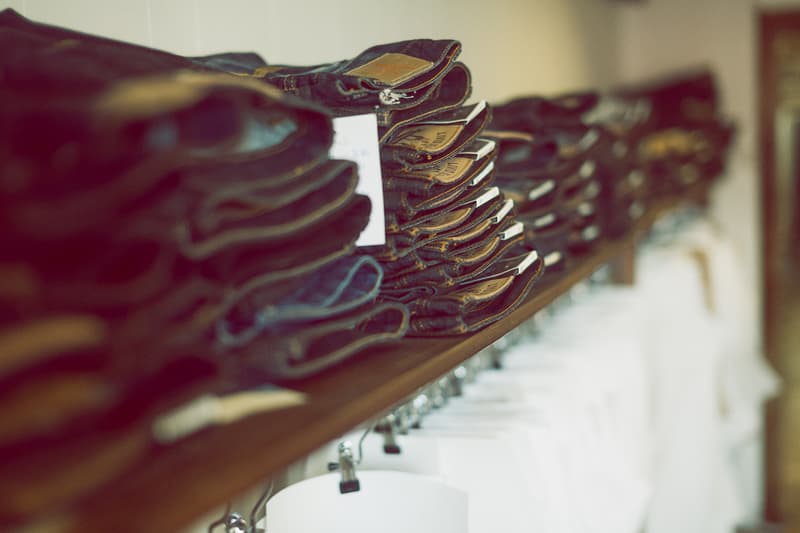
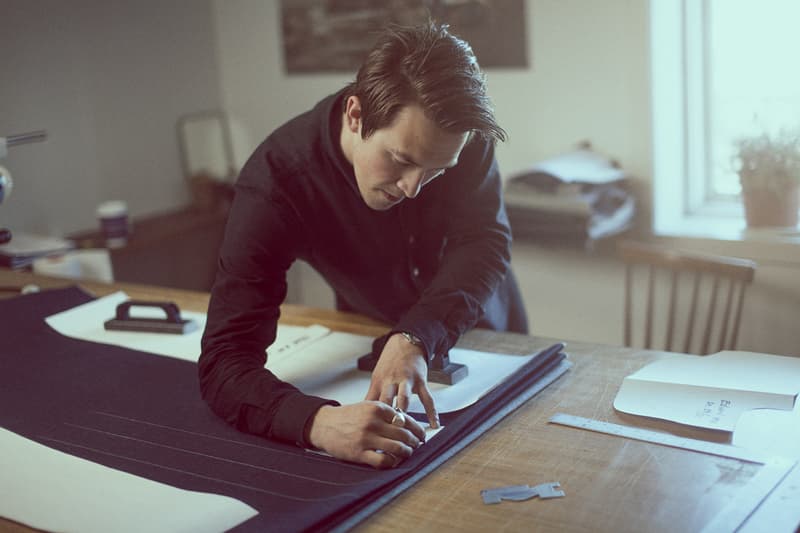
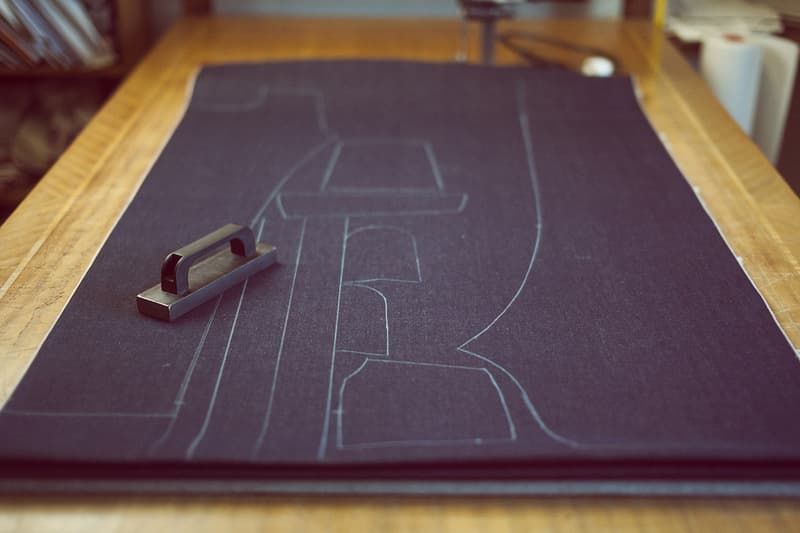

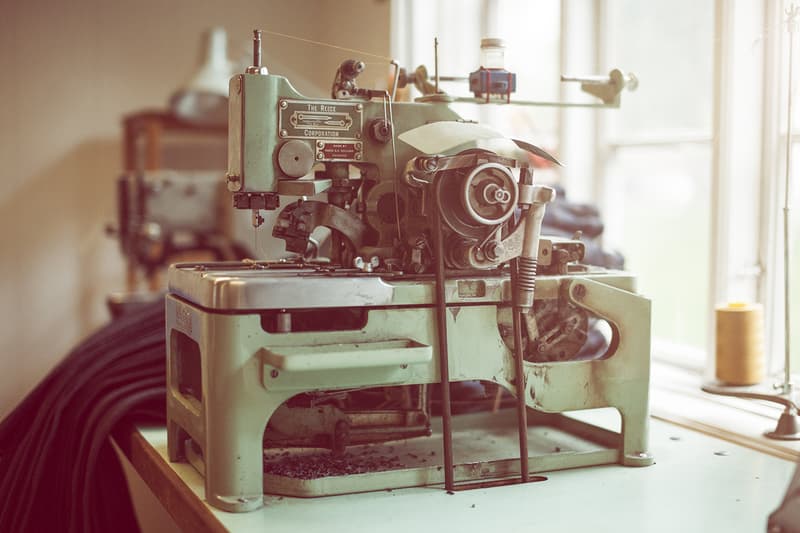
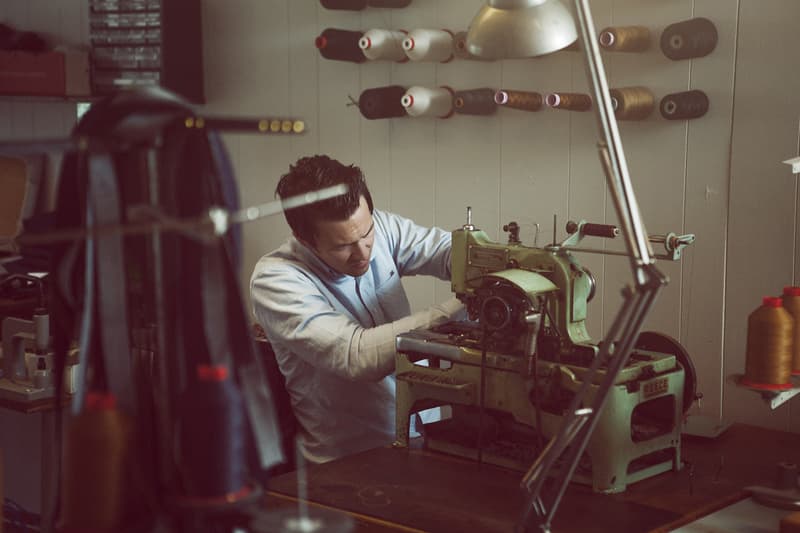
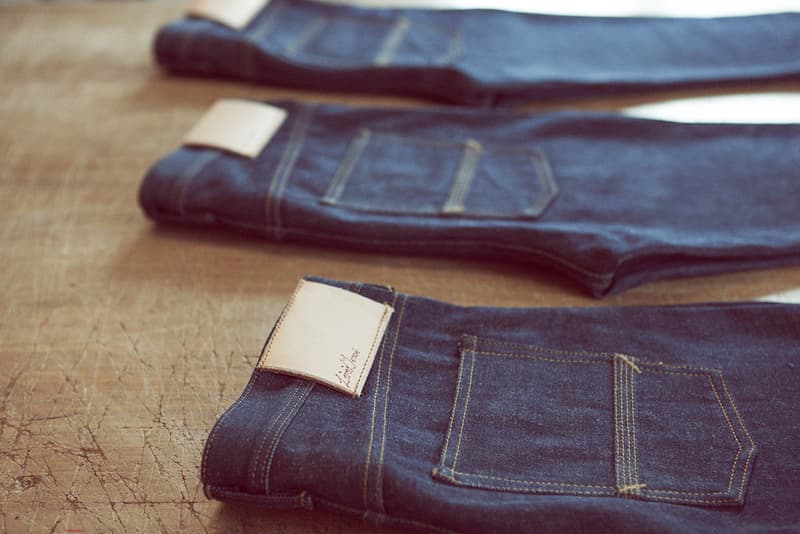
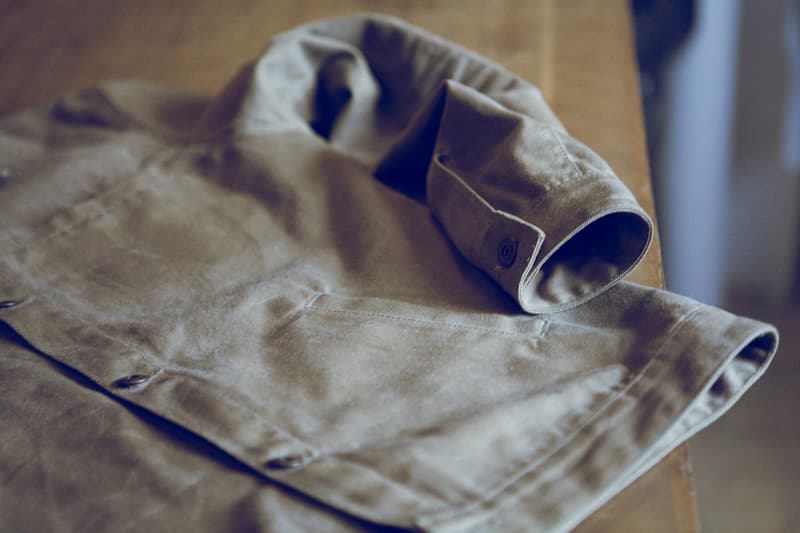
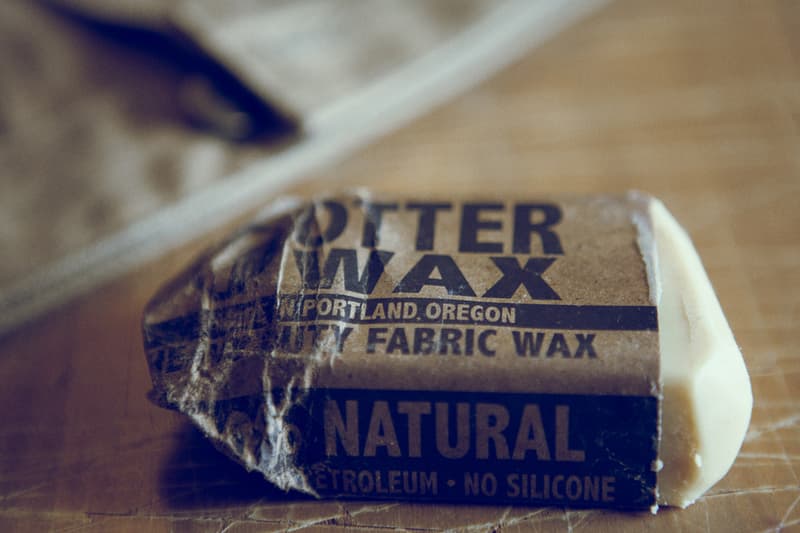

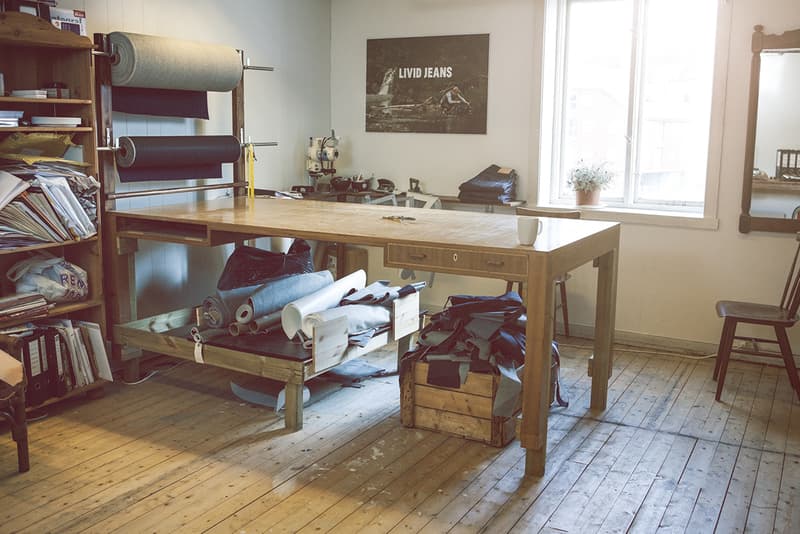
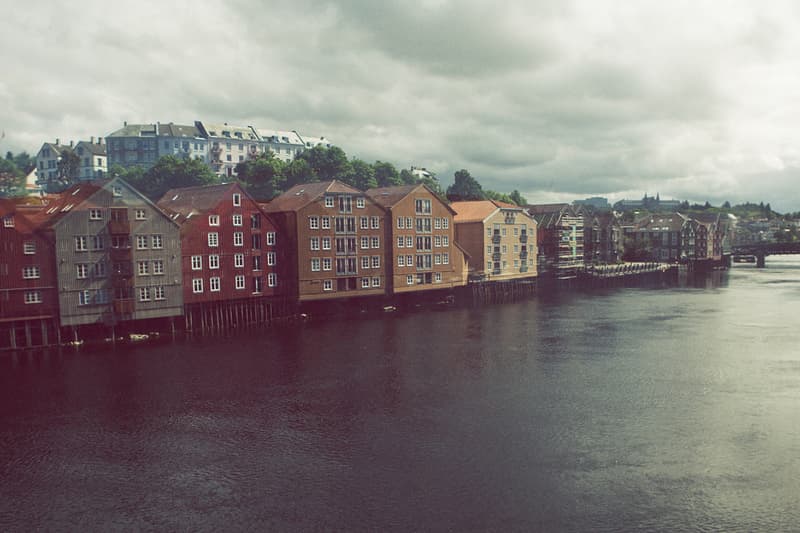
Respected fashion and music photographer Sven Eselgroth explored the fashion scene in Scandinavia for a period of four months. Over the course of his visit we’ve caught a glimpse of some of the most exciting brands in the region such as Norse Projects, Our Legacy, Velour and Uniforms for the Dedicated. In this instalment, Eselgroth sat down with Jens Olav Dankersen, founder of Livid Jeans, to talk about the label’s handmade denim, the current state of affairs at the two-man strong company and what the future holds for the Trondheim, Norway based label.
About the Brand
Sven: Where are Livid Jeans produced?
Jens: Products from our retail line are created in a small family owned factory in Barcelos, Portugal by only five people, and crafted on non-automated industrial machines. Products from our handmade line are made locally at our factory floor in Trondheim, Norway. They’ve only ever been touched by four hands, and we hand-make them on non-automated industrial machines.
S: What kind of fabrics do you use?
J: For our retail line, we only use premium narrow shuttle loom selvage denim and wide loom non-selvage denim from Japan and Turkey. For our handmade line, we use narrow shuttle loom selvage qualities from Cone Mills, North Carolina, USA. Everything we make in-house is cut from Cone Mills denim. Our Japanese fabrics are currently only used in the retail line, but we’re looking into using some here as well. The thing with Cone Mills denim is that it’s a very tight weave, so it takes longer to show signs of wear. The Japanese fabric is a looser weave, so it tends to tear a little more quickly, but when I sell a pair of Livids, there’s a lifetime guarantee. I’ll repair them for free. If it needs to be sent in, the shipping costs are still in place, but the repair itself is free. We’re currently doing some washes for our next summer collection, based on a wear-and-tear concept called “The Inside Story”. We’ll basically be replicating true-to-life wear and tear. If one of my friends came in wearing a pair of Livids, and I saw them and thought “I want to reproduce that look”, I would send the jeans to Portugal and they would replicate it. Then we’d take the story of how the garment came to look the way it does, and we’d print it on the inside pocket. Every wash from Livid will have a story behind it, making it a more authentic product. Each wash will have meant something to somebody, and will have taken a long time to create.
S: Does your brand include designs for women?
J: We are working on a woman’s fit. It’s actually going to be unisex, so we’re working with some stretch fabrics, because it’s so hard to sell unisex jeans in one hundred percent cotton. We have to use some commercial fabrics as well, with a stretch to them. Not too much, just for comfort, but we will still be using selvage denim. I think it’s impossible to use the same fabrics for women’s jeans as with men’s normally. If a woman prefers a boyfriend fit, our models Jakob and Edvard may do the trick for now.
S: Why did you decide to make a unisex fit?
J: It’s a challenge. Women’s jeans have more curves, and we’re trying not to compromise the fit by trying to get it to work on a male frame too, but I think we’re just going to need to take some time over it. A lot of women want to wear Livid jeans, so we’ve decided to work on it. It’s going to be skinny, or super-skinny for a guy. It’s still in development, so we haven’t tried it on many girls just yet. I think targeting women is very hard because they’re extremely focussed on the fit and the placement of the back pocket. Everything has to be right. I think our marketing technique appeals well to women, but it’s going to be a hard process, I think. I also have male customers who think my current fits are too wide and are looking for a super-skinny.
S: You currently have three fits: Edvard – the skinny fit, Jakob – the slim straight fit and Roald – the tapered fit. What about custom made garments?
J: We sell standard sizes on our webshop and also from our store. We do some bespoke jeans as well, but only for customers who are able to attend a fitting session. The customer tries on a pair in a standard size, and then we do the fitting from that by making various adjustments. Some of our customers want a pair just as they are, because bespoke jeans can be quite expensive. When we make our standards sizes, we are able to cut ten pairs at once, but with bespoke pairs we have to create the pattern from one layer of denim and cut the jeans by hand, then we have to label them, then we go into production, so the process is much longer. When we finish a pair of bespoke jeans, we ask the customer to come in and try them on to see if they’re satisfied with the fit, because if they’re not, we’ll start afresh. We do the hemming when the customer comes in, so they feel like they can join in with the process and witness the finishing touches. They don’t have to pay until after they’re satisfied, because it’s quite an expensive pair of jeans, so it’s very important to me that the customer is fully satisfied with the product.
All our handmade jeans are made to order, so there’s no backstock. We can make twelve to fifteen orders per week. On our new webshop, the customer can choose the size, the inseam measurement and the waist, but they also have to choose a production date, as we’re only able to make a certain number per month.
S: How would the bespoke option work for people who can’t come to the shop?
J: We aren’t able to do it. We have to have the whole process of taking the measurements and seeing the fit of the jeans when they’re on, because it’s so hard to make it right if the customer isn’t here. When you buy a product at this kind of cost, I think you’d want to make it right, because the shipping is quite expensive as well. To the US it’s five hundred kroner, so we pay three hundred and the customer pay two hundred.
S: So you make less when you sell your jeans to customers in the states. Why do you subsidize the shipping?
J: I want to make our products available for more customers. We don’t want to make products more expensive than they should be. We want to make the best items we can at the lowest possible cost to the customer. For our shirts, for example, we’re using a very high-quality Japanese fabric, made on shuttle-looms using old Japanese techniques, but we’re selling them for one thousand two hundred and ninety nine kroner. We’re just trying to make the best products we can, and deliver them to our customers at a reasonable price.
S: The basic fit always adheres to one of three types, is that right?: Edvard – the skinny fit, Jakob – the slim straight fit and Roald – the tapered fit.
J: Yes, and we also use them as a basis for our bespoke garments. If it’s for a skinny guy we start with the “Edvard” and we work from that. We don’t make custom jeans from scratch, starting from the first ninety degree angle, we use the basic patterns and make the adjustments from that. On some pairs we have to make quite a lot of changes; making the back or front rise shorter, or making the legs skinnier for example. That’s actually a longer process, because by making the legs skinnier you have to adjust the rest of the fit. There’s a point on the front and back, and in other areas of the pattern that need to line up.


“Every wash from Livid will have a story behind it, making it a more authentic product. Each wash will have meant something to somebody, and will have taken a long time to create.”
Jens Olav Dankersen describes the handmade quality and process of Livid denim
About the Product
S: What made you decide to make a certain fit in a certain way?
J: It’s just based on my buddies and what would fit them well. Some of my friends were having problems finding jeans that were a good fit. The Jakob cut was based on a friend with a slim waist but wider thighs. I tried to make a model that would fit him well. Jakob was the first model I made, and that inspired the base-pattern. Then I made Edvard and Roald with that as a starting point. They’re very different, of course, but they have the same base-pattern. I am working on a Jakob straight at the moment – slim on the top, with a straight leg. There will be the Jakob slim and the Jakob straight, two different cuts with the same base. If a person likes the slim but wants a wider leg opening, he could choose the straight. I always do test-runs, so when I’m working on a new line I ask my buddies to wear a pair, and I’ll also wear it myself, just to test the fittings and see that everything is as it should be. Then I make the changes. The process usually takes a couple of months, depending on how it goes.
S: It’s interesting to see how you can create garments in-house, but also outsource a line for production elsewhere and make it work from a marketing point of view.
J: I think it was very natural, being that it’s so difficult to produce everything in-house. At the same time, though, it’s not that we’re compromising anything. I work with the retail line all the time, and I wear its products. I have just as much respect for that area as I do for the handmade products, and it’s very important to me that our customers feel the same way. It’s just dependent on the customer’s preferences whether they want a pair of jeans from the handmade line or the retail line. The latter is made in Portugal, but we still use the same kind of machinery, which is only operated by four or five people. There’s no mass production going on. The fabric and the fit are still going to be the same.
S: You do some tops as well. Tell me about those.
J: We have Fred, our waxed canvas jacket, for starters. I apply the otter wax myself, which takes quite a long time. About five hours for one jacket. The fabric is from England, and what I wanted to do was sell the product un-waxed and send a bar of wax with it, because if you do it yourself, you grow fond of the garment; you’ve worked on it yourself, like polishing your shoes. I think it looks better too, because it ends up more rough and natural than it would if it were treated in a factory. We make some shirts as well, but we can’t make them in-house because our machinery’s too heavy for such light material. We are able to work with canvas here, though. As for our upcoming products, we have the Olav over-shirt that we’re working on right now – a garment you can size up or down without it looking to big or small. It’s going to be outsourced to our shirt factory too, because we don’t have the right machinery. We also have two different denim vests.
S: How do you find time to do all this? Producing designs, choosing fabrics, hand-making garments… Talk me through your day. Do you have a routine?
J: When I find myself inspired by an idea, I just don’t stop. If I’m making one jacket that I particularly like, I become inspired and begin to make a different one at the same time. I often work on two models at once. I think that’s the reason I have a full collection after only two years. I don’t sew all the time, though. I get to work, sit down at my computer, answer emails and do the administrative side of it, maybe I prepare a blog post or something I’m going to post during the day on Instagram or Facebook, then I go and work on some jeans for a couple of hours. It all depends on how much work we have lined up. Then maybe I go and get on with some designs or set up the production sheets and the orders, recording all the sizes we’ll be making per fit, trying to analyze the sales and noting down how many pairs we have left over in each size to determine how many we’re likely to need next time. On Monday, I’ll do ten things, then on Tuesday I’ll do ten different things. I try to set a time to go home though, usually about six. I do have a girlfriend, and I think it’s pretty hard on her that I work so much. I just try to prioritise what’s most important to do today, and what I can do tomorrow.
S: I like that you sign the products, but I’m sure it’s time consuming.
J: It is, but I think if it’s presented like this, it feels like more of a finished product. It makes the handmade line seem more established. You can also see that it’s handmade, and it’s an easy solution in the long run, because it’s just a pen and tanned vegetable leather. I also wanted to include the words “handcrafted in Norway”, so you can see it in the shop and not just on our website. I have a separate supplier who makes all the tags and care labels, because I want to be able to control the quality separately. I don’t want a thin polyester label; I want a thick canvas. I also like to control the quality of the pocket fabric, because when you get a new pair of jeans and put your hands in the pockets, you can get a sense of the quality of the entire garment. One thing I really like is working with people who are very passionate about what they do. Our photographer love taking pictures for us, and he’s worked with us from the start, so I think he feels the same way. We collaborate with him to create a book called Fades of Indigo, which we produce annually to document our different collections and let people know what we do and why, and to show what fabrics we are using. We talk about our retail line and selvage denim, everything along those lines.
S: Where did the idea for this business originally come from?
J: Three years ago I knew nothing at all about making jeans, about sewing or anything. I was just very passionate about jeans and the wear process. I remember after my first wear and tear project I was totally hooked, because I felt I had built a relationship with that particular pair of jeans. I also began to read about the history of jeans and the production processes, the sewing of the garments and the manufacturing of the fabric, and everything really amazed me. There’s so much more behind a pair of jeans than the average customer might think. There is history in every single piece of equipment and machinery, and just to learn how it works is exceptionally interesting. Having the ability to make something yourself is really inspiring, and when people appreciate something you’ve created, you get very proud of it.
S: How do you cope when a piece of machinery breaks down?
J: It’s very hard, but I’ve always been a bit of a dreamer. When I first started, I could see how the company would be ten years into the future. When I run into a problem, I just think about where I’m going to be in ten years, and that way I find the ability to relax and fix everything. To me, it’s just more work. I just say to myself “Ok, I just have to live with the fact that I’ll probably have to work on this machine for the next twenty hours.” Then I just try to keep sane. Another part of my motivation, is that I know it will help me to improve my understanding of that particular machine, and that there is always a solution that I’m able to reach. When I’ve done it once, I won’t have to do it again, because I’ll have learnt how to fix the problem. You learn as you work, and the more I learn, the easier it will be the next time.


“Three years ago I knew nothing at all about making jeans, about sewing or anything. I was just very passionate about jeans and the wear process. I remember after my first wear and tear project I was totally hooked, because I felt I had built a relationship with that particular pair of jeans.”
Jens Olav Dankersen on getting into the business
About the Business
S: What is your long-term business plan?
J: Our goal is to be able to move production to Norway. When I first started, a lot of people said “Jens, you can’t do this! It’s impossible. That’s the reason other companies are moving production out of Norway, so why are you establishing your business here and trying to expand it while everyone else is closing down?” But I think that’s the important thing – saying “I’m going to do it anyway, and I’m going to make it work”. I think that’s what makes Livid so special, and helps us to compete in the market. This is a hard market in which to survive as a small brand.
S: At some point during the last two years, you must have realized that you had to find some way to make the business more profitable. Was this the plan all along – to have production elsewhere so that you could make a profit, or did you realize it was a necessity later on?
J: We made a video about our handmade line a couple of months ago, and someone came to me and said “This is just a gimmick. You’re not making jeans in Norway – you’re just bought a couple of old machines and made a video to generate more sales for the retail line.” Some people might think that our plan is to gain respect by making jeans in Norway to generate more publicity for the line we produce in Portugal. Honestly, I make jeans here because it’s my passion to produce garments in a country where hand-crafting is a dying trade, in order to inspire others to use their hands again. I will always produce in Norway, but for me to be able to do that I also have to produce in Portugal. I said to myself that if I was going to move production to Portugal, I wasn’t going to compromise. In Portugal I’m still using Japanese fabric and selvage denim – very expensive materials – but over there I’m able to make it less pricey so I can sell a greater quantity, and sell to stores, though the margin for that is quite low. We have to make a large quantity to make it work.
S: The thing that still needs to be reconciled is that the work you’re doing here is theoretically more a hobby than a profitable business. As the brand evolves, what is your plan?
J: My plan is to expand, and when we come to a point where we can’t be here anymore, we’ll have to move. I hope that more and more people buy the products that are made here, so we’re able to grow and employ more workers, and also so that we’re able to deliver more jeans to stores and consumers. It’s all about producing correctly and effectively. I’ve already worked on it to a point. We started with one machine and now we have fifteen. This is all in under two years. We also have a full time seamstress, and hopefully we’ll have another next year. The more we are able to produce, the further we can lower the price and the more we can sell as a result.
S: So you think you’ll be able to employ Norwegian people and still create a profit margin?
J: I don’t think we’ll ever be able to earn a lot of money doing this, but I think it needs to be done. I will continue as long as I’m able, but if I come to the point that people are no longer buying the products because they’re too expensive, for example, I’ll be forced to close down the hand-made line. That’s just the reality of it, though I hope it won’t happen. It’s my passion, as I’ve said, and to be able to work in this environment – having everything under the same roof, and having people come in and try on their newly-made pair of jeans a couple of metres away from you, being able to let them see the finishing touches being made and then take them straight home – you don’t experience that anywhere else in Norway.
S: How did you find your new full-time seamstress?
J: She’s actually from Slovakia. She’s a professional seamstress and worked in a factory over there for many years. It was very difficult to find people who were qualified to make a pair of jeans here in Norway. No one makes anything anymore. A lot of people applied for the job, but when they came to speak with me, they said “I’ve never sewn before, but I’d like to try it out.” Production was already very expensive, and so for me to have to spend time teaching someone how to make a pair of jeans well would take months. We had to find someone who had been making clothes for many years, and who enjoyed themselves doing that. In Norway, there were very few jobs available that corresponded with our new employee’s experience and passion, which was making clothes, so she ended up working in a kindergarten. I found that it made me feel very proud – the fact that we were able to employ a person and give her the opportunity to do what she wanted.
S: Norway is one of the most expensive places to be an employer. Were you in a position where you could meet the expenses comfortably?
J: It’s been hard. I’m not able to give myself a salary. I pretty much work for free, just taking enough to pay my rent, but as long as you’re doing something you love, and you’re able to eat and have a roof over your head, everything’s Ok. I think in a couple of years I’ll be able to live and work normally, so that’s a huge motivator. When people say it’s impossible, I think “Damn – now I really want to do it!” I think I will make it work.
S: Do you get any help with your marketing and promotion?
J: I do most things myself. I organize the production of the Fades of Indigo book and produce all the text. I had help with the typography, the website and the webshop, and a good friend of mine created the video on our website, but that’s just about it. One friend produced the site and online shop, and another did some hand-drawings, the typography and the logo.
S: Do you have any techniques for marketing?
J: I just think “Would I appreciate seeing this?” I try to tell people about my passion, about what I love and what I think is beautiful. That’s the way I work. I say “This is our new machine, this is our hand-made line, and this is our retail line. This is how we want to do it. This is our dream.” I like to make sure everything is very open and honest. Everything about the process is made transparent to the customer. It’s all about romanticizing hand-craft, and everything behind making jeans. It’s not difficult though, because the process itself is beautiful. Everything from the rolls of fabric to the excitement of seeing the machines at work is wonderful to look at. There are a lot of people who have never seen anything like it before, and things people haven’t seen before are always inspiring. I’m always surprised by all the different types of people who come in. There are people who have never had any real passion for denim. They’ve just been wearing a pair of jeans and not thinking about it, but then they hear there’s someone making them locally, and they want to have a pair for themselves because they’re good quality and they’re able to get a say in the production stages and to do a bit of the design themselves regarding the fit. I think that’s very special for them.
S: Especially if it’s for two thousand kroner. That’s not a ridiculous amount of money.
J: In Euros it’s two hundred and ninety five.
S: That’s just under two hundred pounds (one hundred and ninety six to be exact!), which is what you’d expect to pay for a really good pair of jeans.
J: For our customers based in the states we also deduct the VAT, so it’s two hundred and ninety five Euros minus the twenty-five percent VAT. Then we’re also able to compete with American-made products.
S: Have there been any times when you wondered if it was all worth it?
J: A lot of them. Usually problems with the machines. There has been a lot of time spent repairing the machines and going through manuals. A lot of the time I didn’t know what I was doing, so I just had to try and try until I got it right. Sometimes I think “What am I doing? This is impossible!” It’s so expensive to make jeans. If I spend nine hours trying to repair a sewing machine, that’s quite costly. My hours are very expensive to waste fixing a machine, because I need to spend time working in production. The production itself in Portugal is a full time job, just like sewing jeans is a full time job, but if you have a passion for something, and everything’s going well, you can see it being your job for many years to come. It keeps me going. I’m not going to be working twenty-four hours a day for the next twenty years – it’s a lot of work to start with, but hopefully I’ll be able pay more employees and eventually have a regular working day!


“I try to tell people about my passion, about what I love and what I think is beautiful. That’s the way I work. I say ‘This is our new machine, this is our hand-made line, and this is our retail line. This is how we want to do it. This is our dream.’”
Jens Olav Dankersen on his marketing approach



